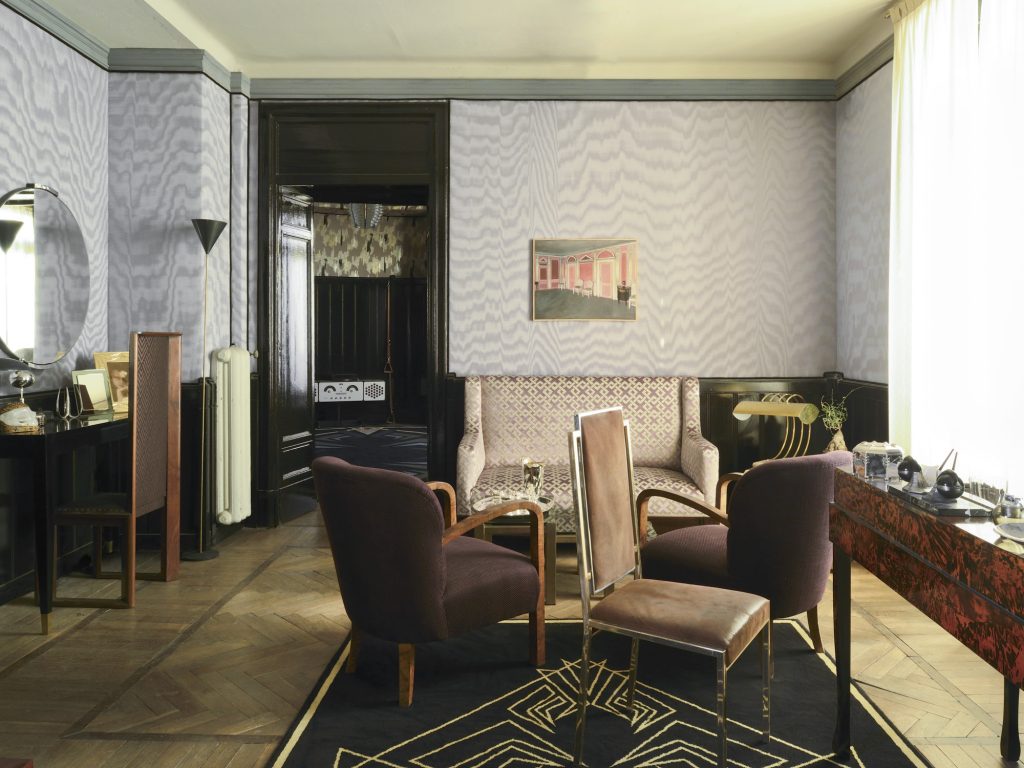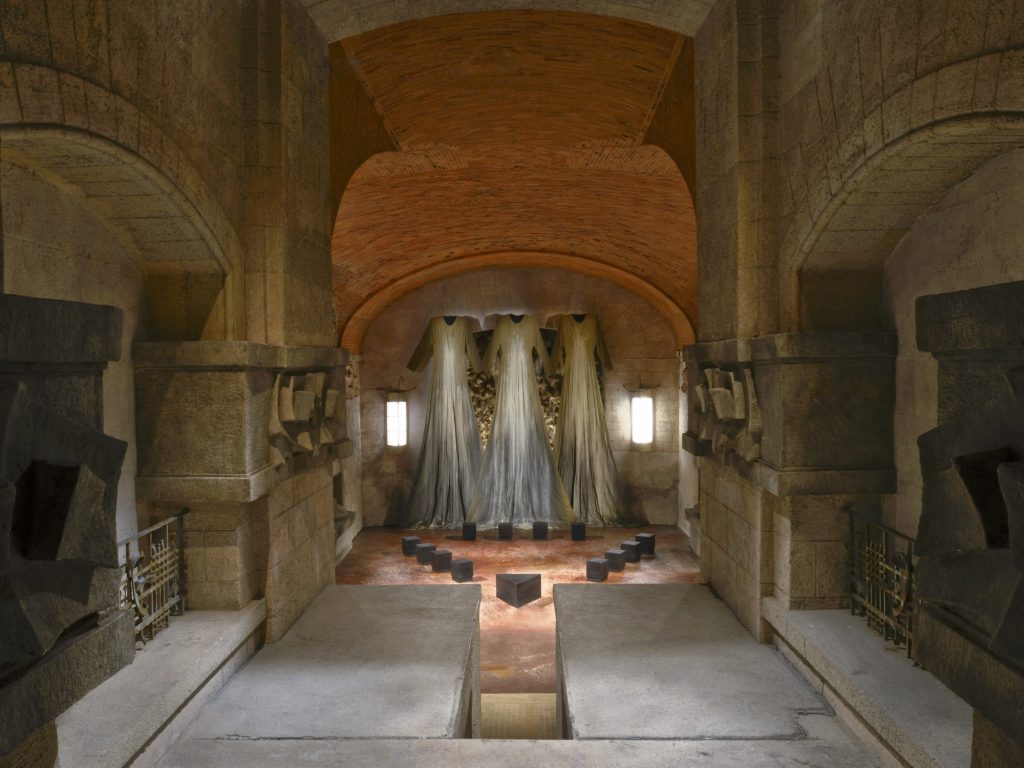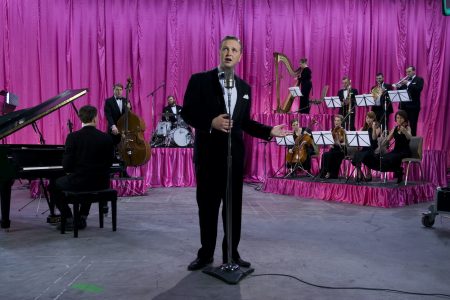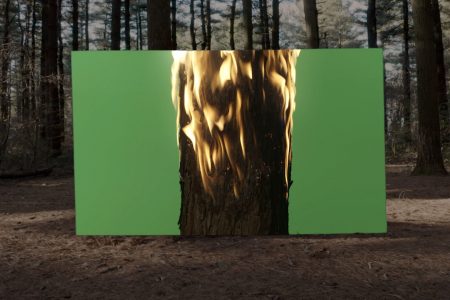
Luca Guadagnino: Timeless Necessity
Luca Guadagnino creates refined pieces of cinematography, defying banality with the production of contemporary classics. Formafantasma’s Simone Farresin and Andrea Trimarchi interview the Italian filmmaker.
The films of Luca Guadagnino are refined pieces of cinematography conceived by a great cinema lover who defies banality with the production of contemporary classics. Formafantasma’s Simone Farresin and Andrea Trimarchi interview the Italian filmmaker.
TLmag: Compared to other media, cinema has the capacity to unveil reality in an almost subliminal way. At present, however, it is somewhat arduous to find filmmakers who are able to uncover the issues of our relationship with the ecosystem. Despite having a vast amount of data at our disposal, it seems that being capable of interpreting the world in its complexity remains a difficult task. Have you ever run into movies or film scenes that managed to explain reality instead of merely recording it? Movies that made you understand things in a more profound and non-didactic way?
Luca Guadagnino (LG): My attraction to cinema started when I became aware of its power to reveal visions. I see it as a key to overturn, unveil and provoke epiphanies. Honestly, I was never attracted by cinema as a form of entertainment nor illustration. For instance, I still remember how shocked I was when watching Alfred Hitchcock’s “Psycho” for the first time. It was one of the strongest telluric revolutions of my life, even more than the discovery of puberty, or the first hand-job that resulted in ejaculation. That screening of “Psycho” (I was about 11 years old at the time) was a deflagration that went in a thousand directions. Starting from the fact that it destroyed all the commonly accepted rules of what, until then, I considered cinematic entertainment. Killing the protagonist within a short time, for instance. Or the fact that the movie and its director asked us to adhere to the point of view of a killer, a pervert with multiple personalities, sympathising with him profoundly.
TLmag: We actually wondered how you handled the complexity of dealing with cinema, a medium that is often seen as a form of entertainment.
L.G.: But that is for the poor of spirit! My adolescence was very lonely because I was in search of screen pleasures which I discovered with growing passion and greed. I never understood this weird idea of cinema being a distraction. Distraction should be innate, something that emerges instinctively and a not planned one. Considering an art form as a distraction is a foolish thought.
TLmag: We are curious to see how you will handle this within a TV series. In our opinion, every discipline has its own clichés. What are the stereotypes that you try to question in your work or that you just cannot stand?
L.G.: Clichés can be close to archetypes, or to obsessions of one’s own imagination. But I agree that they exist. Especially because, in my opinion, in the last 35 years, postmodernism has played with this concept in a somewhat vile way. I am referring, of course, to the more mainstream outcomes, I am not talking about serious postmodernism. I think of what has become of the concept of postmodern: to rewrite what already exists and push it to the nth degree. I refer to the movies of Adam McKay, Paolo Sorrentino, and Takashi Miike – three filmmakers who produced totally different outcomes. We are not here to discuss the motivation for their success or their quality, but let’s say that all of them, each one in his own way, are postmodern filmmakers. For example, in a film like “Vice”, Adam McKay tells us about Bush’s policies with a postmodern look, with an attitude that winks at the audience. The Italian filmmaker Sorrentino does a continuous work on fracturing, ruminating and vomiting images. Takashi Miike makes a movie every six months. He does not have time to rethink what he is doing because he has to rework it again. I am more into figuring out how to tell the behaviour of the characters I am interested in; how to immerse them in the places they are in; how to get in and out of these places and these characters according to a stance of classicism. It is a personal point of view, and I do not mean to affirm whether it is better or worse. I think that this idea of adhering to a place and the principles of the characters is part of a cinema that I love deeply. To me, it seems that this cinema stands the test of time and rises as a kind of untouched monument. I think about the movies of Jean Renoir, Roberto Rossellini, Nagisa Ōshima, Bernardo Bertolucci, Éric Rohmer.
TLmag: When we watched “Call Me by Your Name”, which reached a very diverse audience, it seemed to us that there was a feeling of nostalgia. For the dimension of adolescence, obviously, but also for a much broader aspect, an almost political one. We refer to the family in that specific place, in that house that is practically a lost paradise and where everyone speaks different languages, of the moment when the Roman statue is discovered in Sirmione. It seemed to us that there was a sense of nostalgia for the best aspects of Western culture, which perhaps today is in decay. Did we just see it ourselves, or is it something that you share?
L.G.: I like what you say. I did not elaborate it in my head like this, but I appreciate it and will make it my own. When you prepare a setting – talking about clichés – often and unfortunately the reflection is not based on the principle of reality proper to the character you portray, but rather on the archetype (or stereotype) of that specific character. In the case of “Call Me by Your Name”, the greatest danger was to end up telling the story of a group of wealthy people who are on an endless vacation, and a petulant young man who is trying to snatch the first blowjob of his life. The assumptions are that his father is an archaeologist, whereas his mother is not well described in the novel, and this boy is vivid and full of very deep cultural ferments, which continually electrify him. Not to make this situation a cliché, I thought of my beloved Rossellini, and that scene in “Journey to Italy” in which George Sanders leaves his home to find himself in Capri in the company of eccentric friends, including a woman who is clearly a lesbian, and another who wants to seduce him. For the umpteenth time, I saw in that world of Rossellini his ability to never adhere to prejudices. When I saw the house where we shot the movie, it seemed perfect for a family that might have inherited it, without having the money to keep it the way someone with a lot of money would have done. The set designer and the decorator wanted to line the whole house with wallpapers, to create a fabulous decor. I was baffled because the problem was not the decor but the lifestyle. Who are these people? Why do they own that house? What are they doing in that house? How do they keep it? How does it express their past biographies and somehow wait for their future?
TLmag: The use of interior spaces in your movies was the topic of our next question. The staircase in “I Am Love”; the house in “Call Me by Your Name”; the hotel chosen for “Suspiria” – settings have particular relevance in your movies, and we know that you also deal with interior design. What is the difference between creating settings and real interiors?
L.G.: They are two completely different things, like talking about a cat and then talking about a tiger. They are subjects that cannot be mixed. Set design has to do with profound reflections on personalities that already exist. It means creating a biography of characters in space, and at the same time creating an image that works at a bidirectional level. Designing an interior for a shop or a private home means creating a space that will become a place with a biography, but which does not have it at the moment you are making it.
TLmag: We were very impressed by “Suspiria’s” boldness, and it seemed interesting, or so we interpreted, that you were testing the limits of the visual apparatus, almost trying to go beyond it. What made you want to do a remake of a film like “Suspiria”?
L.G.: The first reason for this is that when I first saw the film at the age of fifteen, I was quite baffled and overwhelmed. I found its fairy-tale side fascinating: the idea of the woods, the night, the woman. The sensory assault that the movie proposed was unprecedented for me. Obviously, I did not yet know certain outcomes of American cinema of the 1950s and 1960s, and I knew little or nothing about Mario Bava. The tenacity of wanting to do a remake is different from the instinct of wanting to do it. A thirty-year determination to make that film led to a different direction from the passion I could feel for it. It also led to the generation of thoughts on some themes, such as the feminine, that I believed needed to be seen from a different perspective than Dario’s, whose movie, in fact, erases them.
TLmag: The next question is precisely about the relationship you have with gender issues in your films, even in your position that could be simply seen as a 40-year-old white man.
L.G.: I am not a white man: I am half Italian and half Algerian; my mother is Arab. So, as they would say in America, I am not white, I am not Caucasian. I am a 48-year-old person, who could be defined as mixed, culturally Italian, homosexual, and who, throughout his artistic activity, has worked mainly taking an interest in female characters. We could say that I am a poster boy for political correctness! The real problem is that the language of political correctness is not necessarily the only language that can be used when dealing with gender issues. The policies that have become dominant until the day before the Coronavirus spreading around the world are opaque. From a certain point of view, they need an intense critical approach, so that only the best of these policies can emerge, whereas the worst can be discarded. I agree with Jessa Crispin, who has written beautifully about the #metoo movement. A woman, an important American intellectual, who does not consider valid the oppression to say there is no alternative to this language. It reminds me of when we used to say that there was no alternative to Matteo Renzi.
TLmag: A tricky question considering current times with confinement, but which films would you recommend that deal with isolation? And conversely, which films that have to do with a sense of community and shared life?
L.G.: Ingmar Bergman’s “Hour of the Wolf” comes first to my mind. Isolation films are generally difficult, so imagine now. “Dead Man’s Letters” by Konstantin Lopushansky. And, maybe, Andrej Tarkovsky’s “Stalker”. In my opinion, “Samba Traoré” by Idrissa Ouédraogo remains a masterpiece on the concept of community. Jonathan Demme’s “Cousin Bobby” is another excellent film on the same subject. “The Rules of the Game” by Jean Renoir crosses the sense of community with that of isolation. An extraordinary film that came to mind when you asked me about the issue of our relationship with the environment is Nagisa Ōshima’s film “Merry Christmas, Mr. Lawrence”. The concepts of imprisonment and confinement are present in this movie, but everything happens against the backdrop of the lush vegetation of Java, and the collision of two cultures, the British and the Japanese. Maybe, given the current situation, this is the most mandatory film for me.
TLmag: Your films are formally rigorous and there is a critique, perhaps a bit Calvinist, that is your movies are over stylised.
L.G.: I wish it were a Calvinist critique! I have great respect for Calvinism. After all, you can see Calvinism in films by Robert Bresson, Paul Schrader… I find Calvinism noble.
It is a silly critique. These criticisms come from the people who accept the sloppiness of illustrative cinema, on the one hand, and the sloppiness of the advertising language borrowed by cinema, on the other. The two extremes can be summed up for example in critics that appreciate talking scripts, full of close-ups of people speaking for an hour and a half, or the fracturing of language with the sole purpose of keeping a rapid rhythm that eventually becomes so continuous that it turns boring.
Portrait image © Alessio Bolzoni
Suspiria set images © Mikael Olsson












